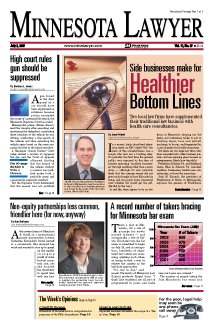I was poking through the U.S. Supreme Court's decisions from its recently concluded term and a couple of things caught my eye. One opinion I found a little amusing was KSR International Co. v. Teleflex Inc., et al., where it took the court 31 pages to say that a certain innovation to an auto pedal was obvious and therefore not patentable. (OK, OK, the decision was vastly important in the patent law area -- in fact one of the most important in decades -- but I still love the irony of dedicating more than 30 pages to come to the conclusion that something was obvious. Shouldn't the court's test for obviousness just be something like the court's standard for defining "hard-core pornography" as enunciated by Justice Potter Stewart in 1964 -- i.e. "I know it when I see it.")
Speaking of homespun wisdom, the award this last term for a common-sense "come on folks, let's be reasonable" approach, goes to Justice Antonin Scalia in Scott v. Harris. In that case, the court held that a police officer could not be sued by a fleeing suspect for injuries he sustained when the officer forced his vehicle off the road to end a high-speed chase. (Hey, Starsky and Hutch did it all the time and they never got sued ...).
"The car chase that respondent initiated in this case posed a substantial and immediate risk of physical injury to others ; no reasonable jury could conclude otherwise," Scalia succinctly summed up.
To bolster his point, Scalia attached to the electronic version of the court's opinion a Real Player video of the police chase to show that the defendant's version of events was unreasonable as a matter of law.
Hmmm. I am just glad the court did not attach any video to its decision in the Anna Nicole Smith case.
Monday, July 9, 2007
Subscribe to:
Post Comments (Atom)

No comments:
Post a Comment